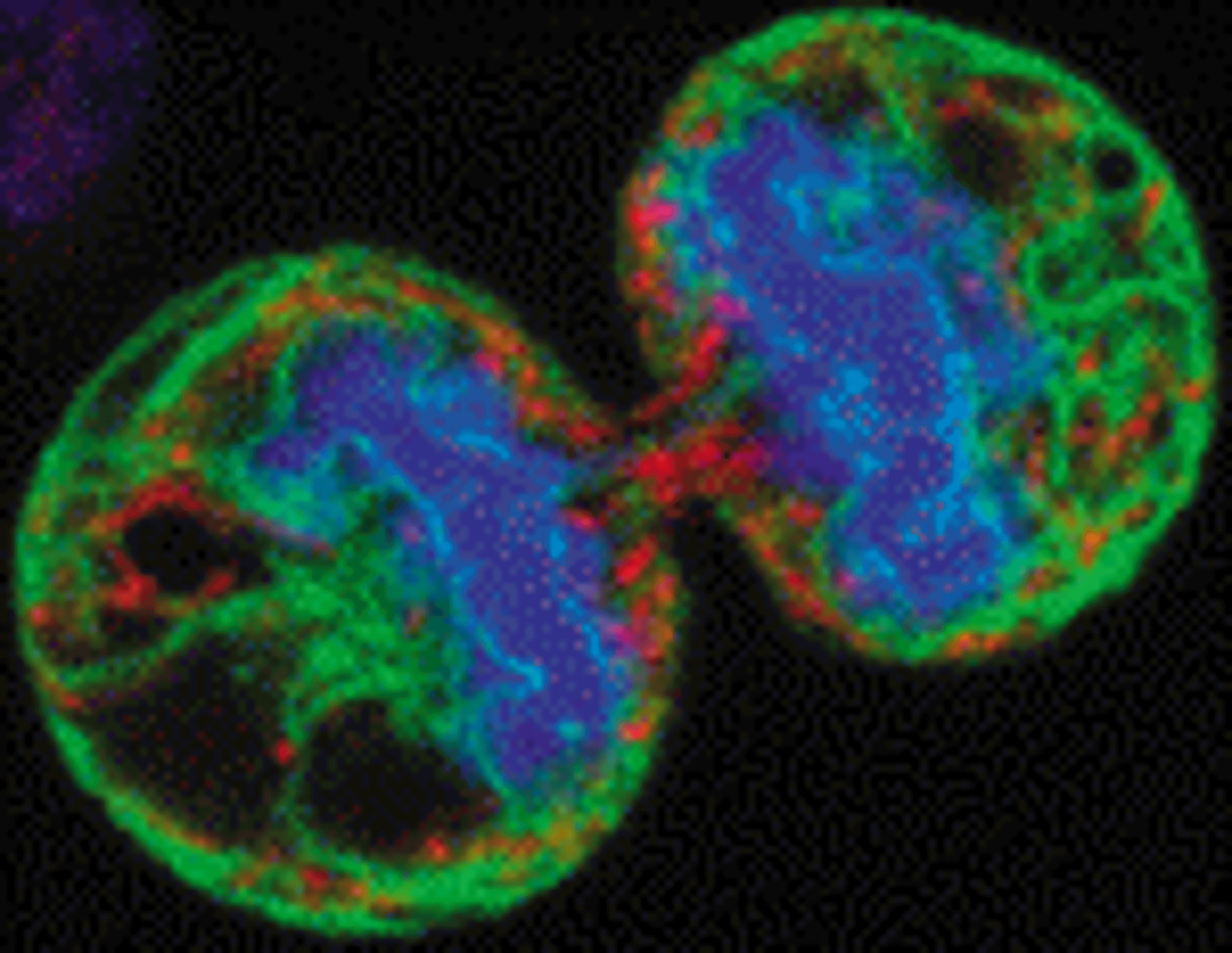New live cell pathway analysis method uses DRAQ5
18 Jun 2008A recent publication in PLoS ONE has again proved DRAQ5 to be the perfect choice as nuclear counterstain in HCS assays. Rosado et al (from the laboratory of Dr Wolfgang Link at Centro Nacional de Investigaciones Oncologicas, Madrid) described development of an exciting new technology that permits the monitoring of compounds interfering with pathways in tumour cells. Cells were stably-transfected with EYFP or ECFP and then respectively to be akt-dependent or akt-independent. Thus, when the isogenic mixtures of these cells were exposed to akt-specific inhibitors, in the absence of IL-3, the EYFP (yellow) cells apoptosed, while the ECFP (blue) cells remained, unperturbed.
The cells were also labelled with DRAQ5. Compounds with generalised cytotoxicity were indicated by reduction of the total numbers of DRAQ5-positive cells (red) over the 12h time-course of the experiment performed on BD Biosciences Pathway 855. In this way it was possible to separate the effects of specific and generalised or cytotoxic inhibitors with reference to a single signalling pathway.
This work demonstrated DRAQ5 as the ideal nuclear counterstain - it efficiently labels live cells, stably demarks the nucleus and has no spectral emission overlap with either CFP or YFP. Furthermore, it demonstrated the compatibility of DRAQ5 with the Pathway 855.

